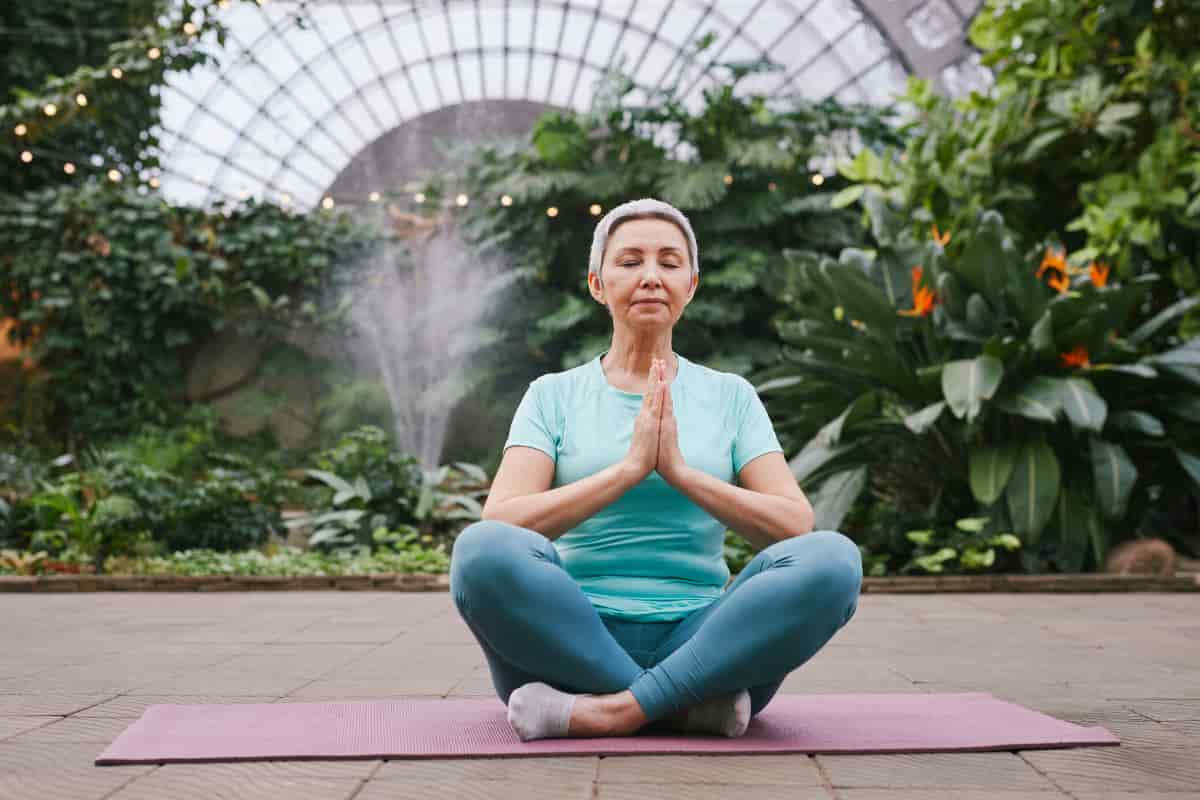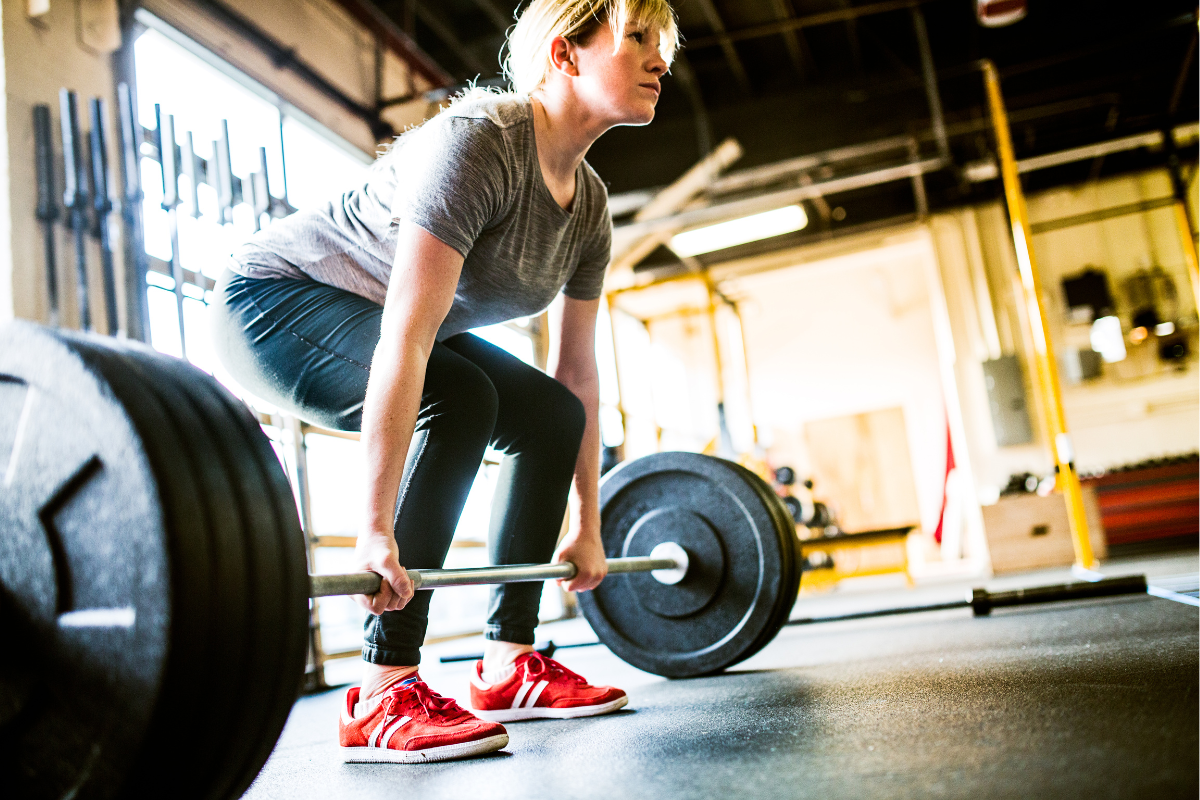The Benefits of Yoga in Midlife

If you’re looking to increase awareness of your body and breath to enjoy a deeper sense of calm and well-being in midlife, yoga offers a fantastic and accessible option.
Yoga is based around a series of poses, breathwork, and mindfulness exercises. There’s a type of yoga for everyone, offering benefits that range from reducing stress and anxiety to building strength, flexibility, and balance. At its heart, yoga is for all ages and ability levels.
Yoga originated in India, and its teachings were first brought to the US in the 1800s. Yoga as we know it began in the 1950s, when a series of master teachers opened schools to the public. Since then, yoga has become mainstream—serving as an important mindfulness and exercise practice for millions of Americans.
Like with any exercise habit, setting and achieving goals around a yoga practice can boost your confidence and sense of accomplishment. Yoga can also improve your body image, boost your self-confidence, and help you tune in to your body, contributing to healthy aging.
The Physical Benefits of Yoga
Shifting hormone levels around menopause can make your body feel more uncomfortable and less familiar. For many women, perimenopause begins in their mid-40s. Estrogen levels drop, leading to emotional shifts, fatigue, and other symptoms like brain fog or anxiety.
During perimenopause and menopause, the body can also become a bit less flexible and more prone to aches and pains. This midlife transition period around menopause gives you the perfect opportunity to reevaluate your physical goals and focus more on flexibility, balance, and strength. That’s where yoga comes in.
Researchers have found that yoga can actually slow cellular aging—reducing inflammation and risk of chronic health concerns. Yoga also decreases cortisol in the body, enhancing stress resilience and improving overall well-being.
Yoga can help you stay limber. It strengthens your muscles and joints, boosts energy levels, and eases physical pain. Regular practice can improve your balance and coordination.
While midlife is often characterized by age-related muscle loss or sarcopenia, yoga can help maintain muscle mass and bone density, reducing the risk of injury and decreasing joint pain. Yoga is also a low-impact activity that’s easy on the body, regardless of your strength or mobility.
The Benefits of Yoga for the Mind
Yoga can also play a role in your mental health. Research demonstrates that yoga improves mood by helping you combat the symptoms of depression and reduce anxiety. Yoga is also a great way to improve your quality of life in just a few minutes a day.
Regular yoga practice is linked to cognitive health. Studies show that movement-based practices that engage both body and mind, like yoga, Pilates, or tai chi, can help maintain cognitive function. Yoga can help your brain build new connections, enhance learning, and even improve memory. This means you’ll slow cognitive aging and boost your brain health.
Menopause Symptom Relief Through Yoga
Perimenopause and menopause usually come with various physical and psychological changes as your hormones fluctuate and shift in midlife. Yoga is a great way to help process these changes and relieve symptoms. Starting a yoga practice during menopause can help lower overall stress and ease the transition process.
Unlike a regular exercise routine, yoga adds some extra elements. During a yoga session, you may do a series of physical poses, but you’ll also bring attention to your body and breath. This offers a range of added benefits.
Studies show that yoga can reduce menopausal symptoms and lead to benefits such as:
- Improving overall mood throughout the day
- Reducing feelings of irritability and anxiety
- Promoting relaxation and enhancing sleep quality
- Easing joint pain through regular movement and stretching
- Improving balance and flexibility
- Decreasing physical pain
- Lowering blood pressure
- Reducing the intensity of hot flashes and night sweats
- Managing aches and pains
- Increasing overall energy
Getting Started
Starting a yoga practice is simple. There are now many studios worldwide. While most offer various styles of yoga, from gentle relaxation and stretching to more demanding vinyasa flow, some focus on one type, like Bikram yoga done in a heated studio. Studios typically charge anywhere from $5 to $20 per session, and you’ll get a better deal if you purchase a package of classes.
If you’re on a budget, don’t have a studio near you, or need to practice at more flexible times, the Internet has you covered. YouTube has hundreds of free classes from top-rated instructors like Yoga with Adrienne and Yoga with Kassandra, to name just a few.
While you’ll initially need to learn yoga from an instructor, many people have a personal practice that they continue outside of a class setting when they feel comfortable and confident. If you don’t find a connection with an instructor, try another.
Also, if you’re practicing in a studio, let the instructor know about any injuries or pain. Never hold a pose that is painful or may aggravate an injury. If you are managing an injury, consider consulting with a physical therapist to learn about any poses to avoid.
While you can practice yoga on any surface, most people prefer a yoga mat ($10-50) to keep them from slipping. Many people find it useful to have a yoga block or two to get the most out of each pose regardless of flexibility or experience level.
Don’t worry if you lose your balance or can’t get deeply into a pose. Yoga experts stress that yoga isn’t a competition with yourself or anyone else. It’s about exploring the deeper dimensions of the body, mind, and spirit.
Give yoga a try. By including a yoga practice in your weekly routine, you can make a noticeable difference in your overall health and enjoy the benefits of yoga in midlife.
Sign up for more unique women’s health content
By submitting this form, you agree to the Lisa Health Privacy Policy and Terms of Use


